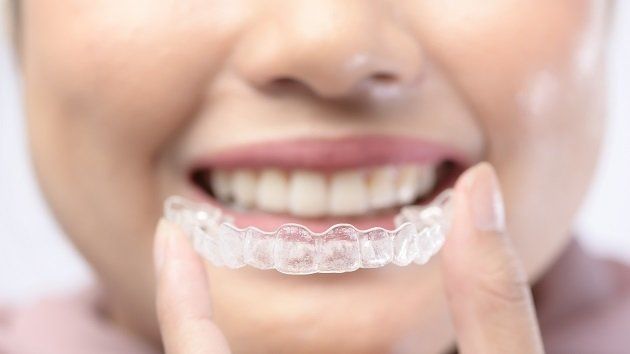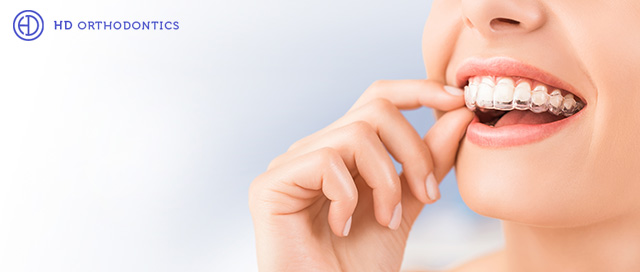The Price of Invisalign: Recognizing the Investment in Your Smile
The Price of Invisalign: Recognizing the Investment in Your Smile
Blog Article
Invisalign vs. Typical Braces: Which Option Is Right for You?
When considering orthodontic treatment, the option between Invisalign and standard dental braces offers numerous crucial aspects that merit cautious examination. Invisalign offers a very discreet alternative with removable aligners, while standard braces offer a more noticeable yet reliable solution for extreme misalignment.
Summary of Treatment Choices

On the other hand, conventional braces contain steel brackets and cords that are adhered to the teeth. This method applies constant pressure with time to accomplish positioning. While efficient for complex orthodontic problems, traditional dental braces call for regular visits for modifications and can position obstacles in maintaining oral health due to the problem of cleaning around braces and cables.
Both choices have their advantages, and the option typically hinges on details dental conditions, lifestyle choices, and individual compliance. Eventually, consulting an orthodontic specialist is vital for figuring out the most appropriate therapy strategy customized to individual needs. Recognizing the subtleties of each choice can considerably influence the overall success of orthodontic treatment.
Aesthetic Factors To Consider
A substantial factor influencing the choice between Invisalign and conventional dental braces is the visual allure each therapy supplies. Invisalign aligners are crafted from clear plastic, making them virtually invisible when used.
On the other hand, conventional dental braces include metal braces and cables, which can be a lot more visible. While improvements in orthodontic technology have actually resulted in the advancement of smaller brackets and tinted elastics, conventional braces still maintain a more conspicuous account. For some individuals, the presence of dental braces may discourage them from seeking needed treatment.
Eventually, the choice in between Invisalign and conventional braces might rest on personal choices regarding looks. Patients who focus on discretion commonly favor Invisalign, while those who are much less concerned concerning presence might choose standard braces. Recognizing the visual ramifications of each option is crucial for making an educated decision that aligns with one's way of living and preferences.
Comfort and Convenience

In terms of ease, Invisalign aligners are detachable, enabling patients to enjoy their favorite foods without restriction and preserve ideal dental health. Brushing and flossing are simplified, as the aligners can be obtained during these regimens, whereas standard braces call for cautious find out this here steering around wires and brackets.
Additionally, Invisalign's dynamic system permits less orthodontic sees. Patients usually get why not find out more numerous sets of aligners at as soon as, which can streamline the therapy procedure and decrease time spent in the orthodontist's chair. In contrast, typical dental braces necessitate routine modifications, making them less practical for those with active timetables. Invisalign. Generally, the convenience and benefit of Invisalign make it an enticing selection for many individuals seeking orthodontic treatment.
Therapy Period and Efficiency
While both Invisalign and traditional braces work in dealing with oral misalignments, the period of therapy can differ substantially between both choices. Typically, Invisalign treatment can take anywhere from 12 to 18 months, relying on the complexity of the case. The clear aligners work by progressively changing teeth into their wanted settings, and regular follow-ups with an orthodontist help make sure development stays on the right track.
On the other hand, typical braces commonly need a longer commitment, typically ranging from 18 months to 3 years. This is due to their fixed nature and the usage of braces and cords, which can be more effective for complex instances and severe imbalances (Invisalign). The therapy efficiency of typical dental braces is well-documented, as they enable for exact adjustments and better control over tooth activity
Ultimately, the selection between Invisalign and standard dental braces might rest on both the awaited treatment duration and the certain dental issues handy. Consulting with an orthodontist is crucial, as they can provide customized recommendations based on private demands, making certain the picked method directory lines up with desired timeframes and results.
Expense Comparison and Insurance Choices
Price plays a substantial role in the decision-making process for individuals taking into consideration orthodontic treatment, whether choosing Invisalign or typical dental braces. Usually, the expense of Invisalign ranges from $3,000 to $8,000, while standard braces normally cost in between $2,000 and $6,000. Variables affecting these prices consist of the complexity of the instance, the duration of therapy, and geographical location.
Insurance insurance coverage can substantially affect out-of-pocket expenses. Numerous oral insurance policy plans provide partial insurance coverage for orthodontic therapies, however the specifics can vary commonly. It is essential for clients to review their insurance policies to identify the degree of protection for either alternative. Generally, traditional dental braces may be much more often covered by insurance plans contrasted to Invisalign, which some insurance providers categorize as an aesthetic treatment.
Additionally, a number of orthodontic techniques supply versatile payment strategies, making both therapy options much more accessible. Clients ought to make inquiries concerning prospective funding choices and price cuts for upfront settlements. Evaluating the total cost, including insurance policy benefits and settlement strategies, is essential for making an informed decision that aligns with both aesthetic choices and budget plan factors to consider.

Verdict
In summary, the selection in between Invisalign and conventional braces hinges on numerous elements, including aesthetic choices, comfort, therapy duration, and expense. Invisalign uses a very discreet, removable alternative that facilitates oral health and nutritional versatility, while traditional braces might be extra ideal for complicated dental concerns and typically come with a reduced cost factor. Eventually, examination with an orthodontist is necessary to analyze specific situations and figure out the most proper treatment choice for accomplishing optimal oral positioning.
When thinking about orthodontic treatment, the choice between Invisalign and typical braces provides a number of important elements that warrant cautious assessment.Contrasting Invisalign and conventional dental braces reveals unique therapy alternatives for orthodontic adjustment.While both Invisalign and standard braces are effective in dealing with dental misalignments, the period of treatment can vary significantly between the 2 choices.Expense plays a considerable duty in the decision-making process for people considering orthodontic therapy, whether choosing for Invisalign or standard braces.In recap, the selection in between Invisalign and standard braces hinges on multiple variables, including aesthetic preferences, comfort, treatment period, and price.
Report this page